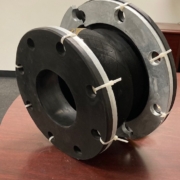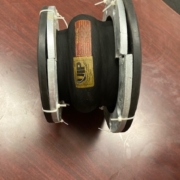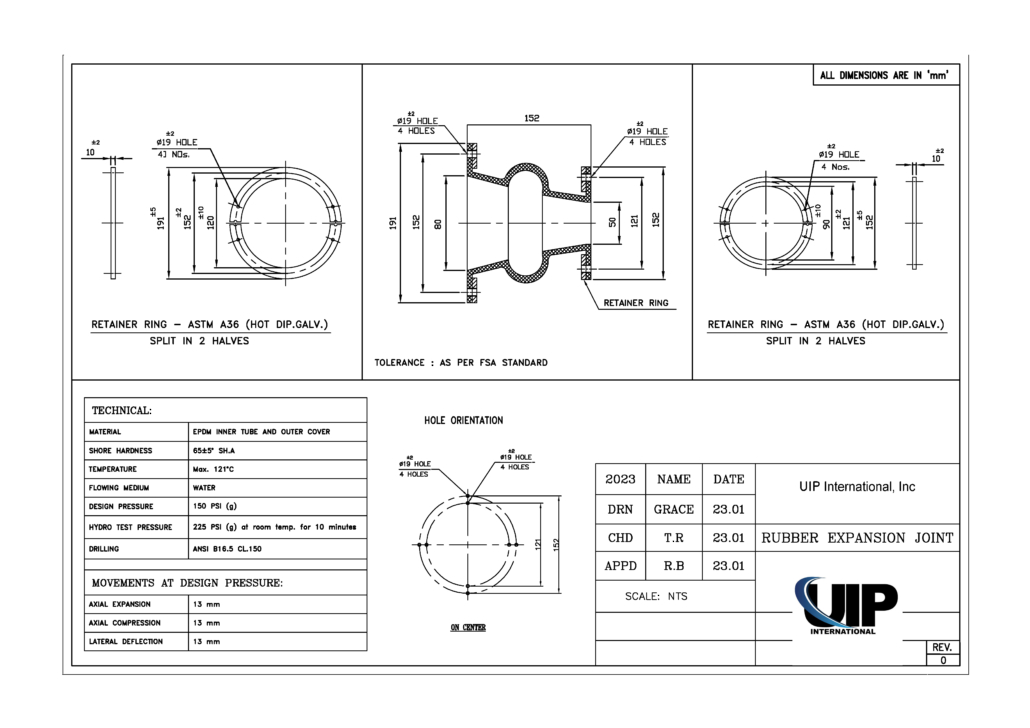What are Tapered Expansion Joints?
The purpose of a tapered rubber expansion joint is to join two pipes with unequal sizes or diameters, transitioning from a larger diameter on one side to a smaller on the other. These rubber expansion joints are often used at pump outlets or on other equipment when reducers are required.
Tapered rubber expansion joints can either be concentric or eccentric:
A concentric design is where the center of each flange is in line, or concentric with each other.
An eccentric design is where the center of each flange is offset, or not in line with each other.
Both concentric and eccentric shapes are available in a wide variety of sizes. As with the regular expansion joints, when piping is not anchored, control units must be used to prevent over-elongation of the joints.
Tapered joints can be made with the following variations: filled arch, sleeve ends, without arch; with special tube materials; with larger arch; with straight section on smaller end of joint to assure clearance of bolts on eccentric type joints and on joints with considerable taper.
The degree of taper should not exceed 25◦. Where a taper is more than 15◦ a filled arch is recommended. When a filled arch is utilized, the available
movement will be decreased 50% from that of an open arch. Where a proposed taper is greater than 25◦, we recommend a steel reducer be utilized and a spool-type expansion joint be used in the adjacent piping.
Concentric Reducing Expansion Joints
In Stock and Ready to Ship Today!
Standard, Single Open Arches With EPDM Tube and Cover
Concentric Rubber Expansion Joint Sizes in Stock:
2″ x 1.5″ x6″
3″ x 2″ x 6″
4″ x 2″ x 6″
4″ x 3″ x 6″
6″ x 4″ x 6″
8″ x 6″ x 6″
10″ x 8″ x 6″
12″ x 10″ x 8″
Other configurations available upon request.
Custom Built Eccentric Expansion Joints
are Made to Specifications.
Offset, or eccentric expansion joints are custom built to specifications to compensate for initial misalignment and non-parallelism of the axis of the piping to be connected. Offset joints are sometimes used in close quarters where available space makes it impractical to correct misalignment with conventional piping.
It is recommended that complete drawings and specifications accompany inquiries or orders for offset joints.




